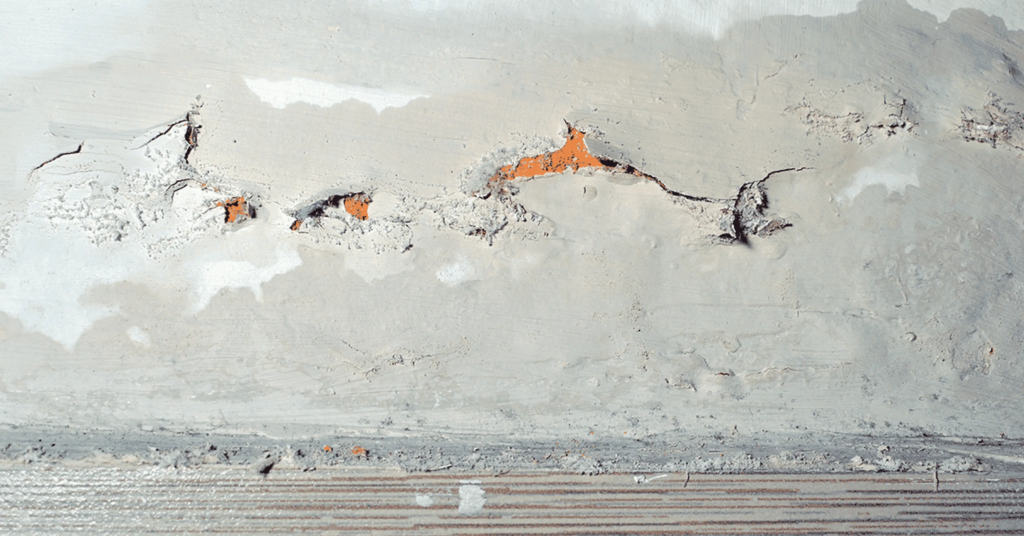
Remove Dampness in Wall
The dampness in walls can occur due to various factors including air condensation, moisture infiltration, leakage issues, or rainwater entering the home. The wall dampness often manifests as dark blotches on walls, ceiling cracks, and peeling paint, signalling a deeper problem. If the wall dampness is left untreated, then it can create a mouldy, moist environment, leading to significant structural damage over time.
The dampness can also harm the fabrics, wallpaper, carpets, books, and furniture, compromising the overall health of your living space. Addressing wall dampness promptly is crucial to prevent further damage as well as protect the well-being of your home. So, here in this article, you can learn more about wall dampness, its causes and prevision measures.

Wall Dampness Causes
Firstly, identifying the root causes of wall dampness is essential as it’s the first step toward solving the issue. By pinpointing the source of the problem i.e. dampness, you move closer to finding the right solution. Once the problem is addressed, Prevention becomes the next important step.
Let’s explore some common causes of wall dampness –
- Water Seepage: Rainwater, undetected roof leaks, leaking pipes, and poorly designed roofs without gutters can all contribute to water seepage and wall moisture.
- Condensation: During monsoons, condensation occurs when warm, moist air contacts cold surfaces like walls and floors, often due to poor ventilation.
- Moisture from the Ground: Moisture from the ground can rise into walls, causing dampness in homes, especially older ones, with inadequate moisture-proofing.
- Poor Ventilation: Poor ventilation in a closed-off home can lead to indoor dampness from everyday activities like washing, cooking, and using the bathroom.
- Low-Quality Construction Materials: Porous bricks, low-quality construction materials, and poor workmanship can create cavities and cracks that trap moisture, leading to wall dampness..
- Leakage: Broken pipes, leaking roofs, poor plumbing, and sloping roofs can all cause water to seep into walls, leading to dampness.
Why Is It Important To Prevent Wall Dampness?
Wall dampness can cause significant damage to your home if left unchecked. Here are some of the common reasons why it’s crucial to prevent it at all costs.
Mouldy and Musty Environment: It creates a dull, musty environment, fostering mould and fungus that can damage your home’s structure.
Decay: Low-quality construction materials affected by wall dampness can decay, spreading damage to wallpaper, flooring, and furniture.
10 Trending Exterior Wall Colors for House
Rot: The dampness can cause wood, plasterboards, bricks, and panels to rot, with fungus and moss spreading to furniture and other timber elements.
Damage to Aesthetics: Wall dampness creates an unattractive environment with peeling paint, water stains, dark spots, and infestations, indicating an unhealthy home interior.
Overall Building Damage and Leakages: The dampness of the wall can escalate into serious issues, causing major building damage, roof leaks, and structural problems.
Effective Solution to Get Rid of Wall Dampness

Prevention is always better than cure, and this holds true in the case of wall dampness. The most effective solution is to prevent it before it occurs. Check here some of the ways to protect your home from wall dampness.
Why Should Hire Professional Painters to Paint Your Home
- Inspect your Home Regularly: Regularly check for cracks, seepages, and leaks, and test moisture levels to catch early signs of wall dampness, especially during monsoons.
- Repair any Leaks: Leaks from broken pipes, roof issues, and faulty plumbing must be promptly repaired, including monitoring false ceilings for potential damage.
- Seal Cracks in your Walls: Cracks in walls, often around windows and corners, should be sealed with waterproof sealants to prevent water infiltration. Filling cracks with putty and repainting before the monsoon is crucial, as unsealed cracks signal potential dampness issues.
- Ventilate your Home Properly: Good ventilation prevents moisture buildup, while poor ventilation traps dampness; ensure cross-ventilation by opening windows to keep your home airy.
- Use a Dehumidifier and Exhaust Fans: Using a dehumidifier, exhaust fan, and chimney helps remove moisture and improve air quality in your home..
- Apply a Damp-proofing Treatment: Damp-proofing involves applying waterproof coatings to external and internal walls, fixing cracks, and using waterproof tiles to prevent moisture from rising from the ground. Installing a damp-proof course and consulting professionals for a comprehensive solution can help protect your home from water damage.
10 Mistakes to Avoid While Painting Your Home for Better Results
- Exhaust Fans: Install exhaust fans in rooms with high moisture to prevent excess humidity and keep the air dry, especially during rain or after mopping. Check behind wallpapers or tiles for hidden moisture, and invest in affordable exhaust fans to reduce humidity levels effectively.
- Dehumidifier: A portable dehumidifier helps remove wall dampness, prevent mould, and dry clothes, making it useful year-round in different rooms.
- Salt: Salt can naturally remove wall dampness by attracting moisture; simply fill a cotton or organza bag with salt and hang it near damp areas to collect excess water.
- Room Fans: Oscillating fans placed in front of damp spots, along with open windows, help circulate air and dry out moisture in small wall areas.
- Desiccants: Desiccants (small pouches filled with drying agents) can absorb moisture from small areas like shelves and corners, effectively reducing dampness when placed near walls for a day or two.
Matte, Glossy, and Everything In Between: Understanding Paint Finishes
Wall dampness is a serious concern for your home’s interior health and requires immediate attention when detected. If left untreated, this can lead to issues like cracking walls, mould growth, and irreversible damage, particularly during the monsoon season when water can infiltrate through the flooring, wooden work, and walls, exacerbated by plumbing or roof leaks.
Moisture trapped in walls can weaken them over time, causing paint or plaster to peel off. It is essential to address the dampness of the wall promptly by drying out the moisture before it causes permanent damage. Always remember prevention is the key to avoiding future dampness issues.




